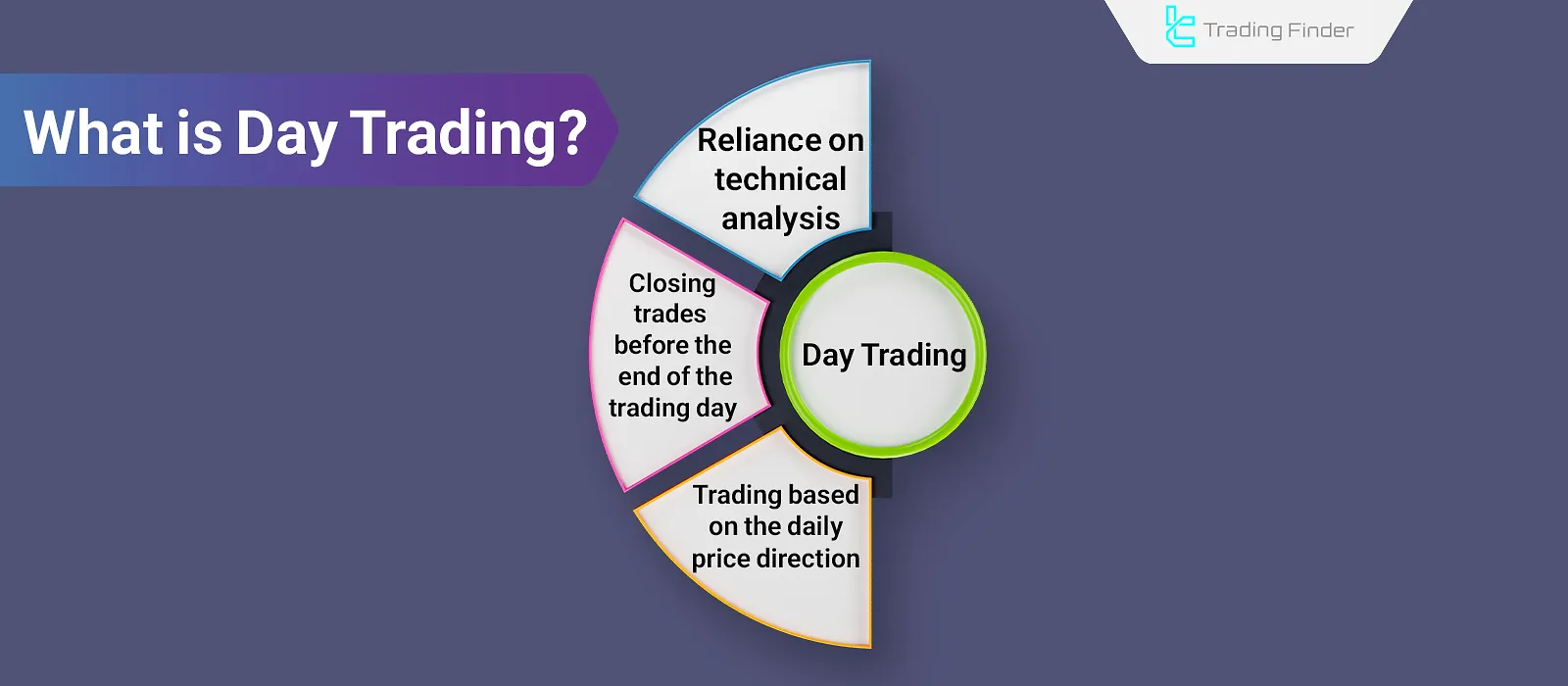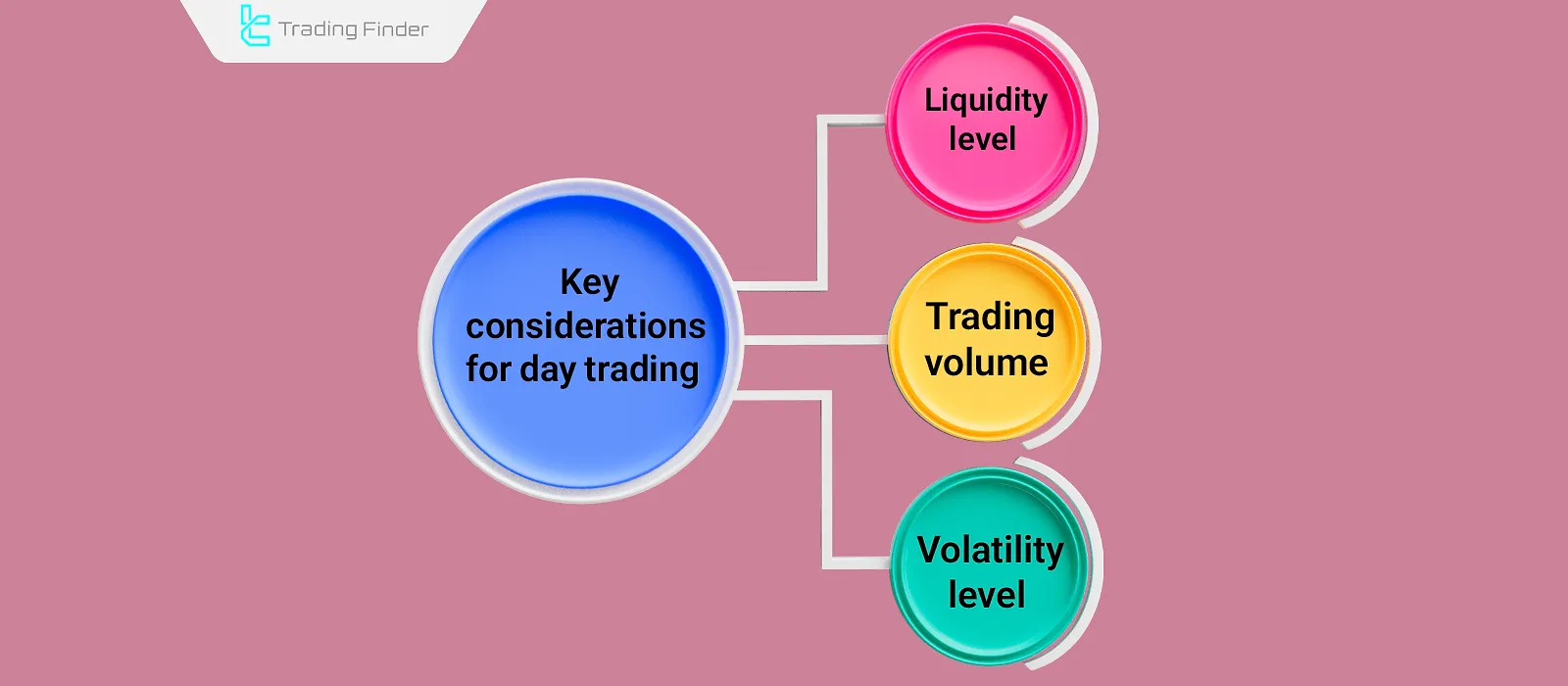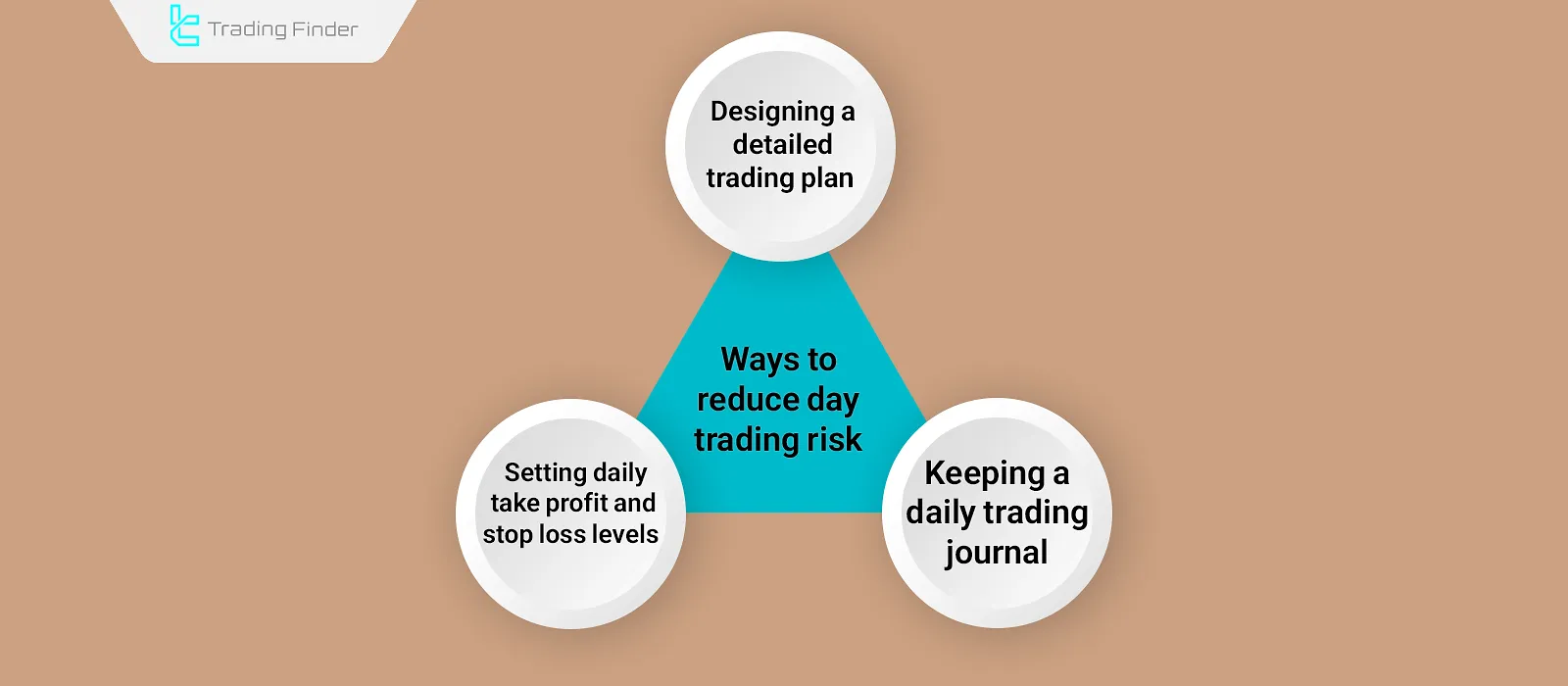In day trading, traders use technical analysis through various methods, such as ICT style and RTM style (Read The Market), to analyze price movements, open and close their positions within the same day.

Day trading opportunities appear quickly on the chart and vanish just as rapidly. For this reason, the trader's reaction speed is extremely important in this method.
What Is Day Trading?
Day trading refers to trades in which both entry and exit occur within a single trading day. Therefore, the goal of day trading is to make a profit from the daily price fluctuations of a trading instrument.
Day trading is primarily executed using technical analysis, and the influence of fundamental analysis is less significant in this style. Additionally, day trading is more suitable for individuals who have enough time to analyze and manage trades throughout the day.
Advantages and Disadvantages of Day Trading
Due to the use of leverage in day trading, the level of price volatility and the number of trading opportunities are greater than in other trading styles. However, this also leads to an increase in risk. The table below, outlines the advantages and disadvantages of day trading:
Advantages | Disadvantages |
Ability to evaluate daily performance | Requires more capital |
More frequent trading opportunities | Higher risk compared to long-term trading |
Possibility to withdraw profits daily | Requires a high level of experience |
Greater experience due to a high number of trades | Time-consuming |
Minimal impact from news events | Requires emotional discipline |
No concerns about holding trades overnight | Increased costs and commissions due to trade volume |
Types of Day Trading Methods
In day trading, the main price trend is typically determined at the beginning of the day. Then, trades are executed based on the dominant direction throughout the rest of the day. Therefore, trades can be conducted with or against the trend.

Trading in the Direction of the Trend
In this method, the main direction of the day is first identified on the higher timeframe, and entry points in the same direction are identified on the lower timeframe. Since the trade aligns with the trend, the risk of loss is reduced in this method.
Trading Against the Trend
In this method, after identifying the main price trend, the trader waits for a counter-trend opportunity. The goal is to detect the end of an existing trend and enter at the start of a new trend.
Although the risk is higher in this method, if successful, the trader can gain substantial profits. Moreover, this method requires a high level of trading experience and a deep understanding of price behavior.
Range-Bound Trading
In this method, based on recent price reactions and the study of price patterns, the chart highs and lows are identified, and trades are executed accordingly. For instance, when the price reaches a high, a sell trade is executed; when it reaches a low, a buy trade is made.
This method heavily utilizes limit orders and stop-loss orders.
Breakout Trading
In this method, key price levels such as support and resistance zones are identified by analyzing past market behavior. The trader then waits for the price to reach these zones.
Upon reaching one of these areas, and using various price patterns such as classic Patterns, a trade is executed in the direction of the breakout.
News-Based Trading
In this method, there is less focus on chart behavior and more emphasis on news and economic data. Therefore, success in this method requires a deep understanding of the market being traded and access to strong news sources.
Important news events rarely occur during normal market conditions. Also, such news is often priced in before its release.
Day Trading vs. Swing Trading
The key difference between these two trading strategies is the duration of the trades. In day trading, positions are opened and closed within the same day, whereas in swing trading, trades may remain open for several days.
Feature | Swing Trading | Day Trading |
Trade Duration | From 2 days to several weeks | Maximum of one trading day |
Time Commitment | Up to a few hours per day | Requires constant monitoring throughout the day |
Number of Trades | Relatively low | One to several trades per day |
Importance of Speed | Less important compared to other factors | Extremely important |
Capital Requirement | Moderate capital to start | High capital needed due to frequent trading |
Important Points for Day Trading
Given that the aim of day trading is to benefit from short-term price volatility, several key factors such as liquidity, volatility, and trading volume of the asset must be analyzed.

Liquidity
Due to the importance of speed in day trading, the asset's liquidity level must be evaluated. One helpful indicator is the spread (the difference between bid and ask prices). The lower the spread, the higher the liquidity of the asset.
Trading Volume
Trading volume affects various features of the asset such as execution speed and technical analysis reliability. The higher the volume, the more suitable the asset is for day trading.
Price Volatility
In day trading, the number of trades is high, and assets with low volatility do not provide enough entry points. Therefore, the daily volatility of an asset should be reviewed before trading.
Volatility directly influences the number and size of trades and also impacts how analyzable the chart is.
Ways to Reduce Day Trading Risks
Day trading is more suitable for experienced and skilled individuals who can analyze price trends effectively. However, even then, day trading comes with its own risks.
To reduce the risks of day trading, it is essential to observe several practices such as keeping a trading journal, setting daily profit and loss limits, and more.

- Design a Detailed Trading Plan: Outline all possible reactions to in-trade events before entering the market and starting your activity;
- Keep a Daily Trading Journal: Record all actions along with the reasons behind them to analyze and optimize your trading strategy;
- Set Daily Profit and Loss Limits: Define a maximum profit and loss for each day to prevent overtrading.
Conclusion
Day trading is a strategy in which trades are opened and closed within the same day, and the outcome is finalized by the end of the trading session. The main price direction is identified early in the day, and trades are executed accordingly.
Day trading strategies are mostly based on technical analysis, and fundamental analysis plays a minimal role in this style.





